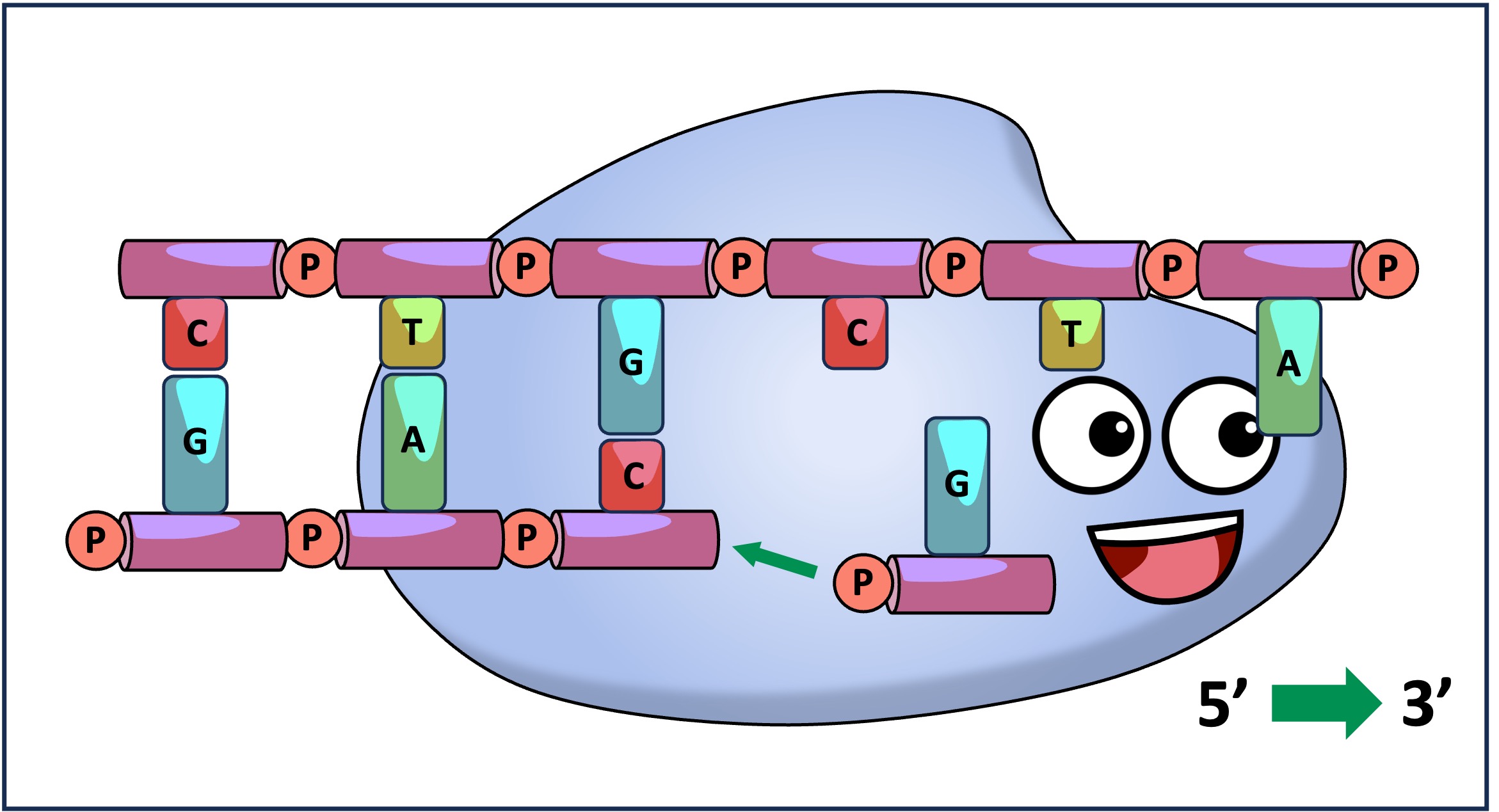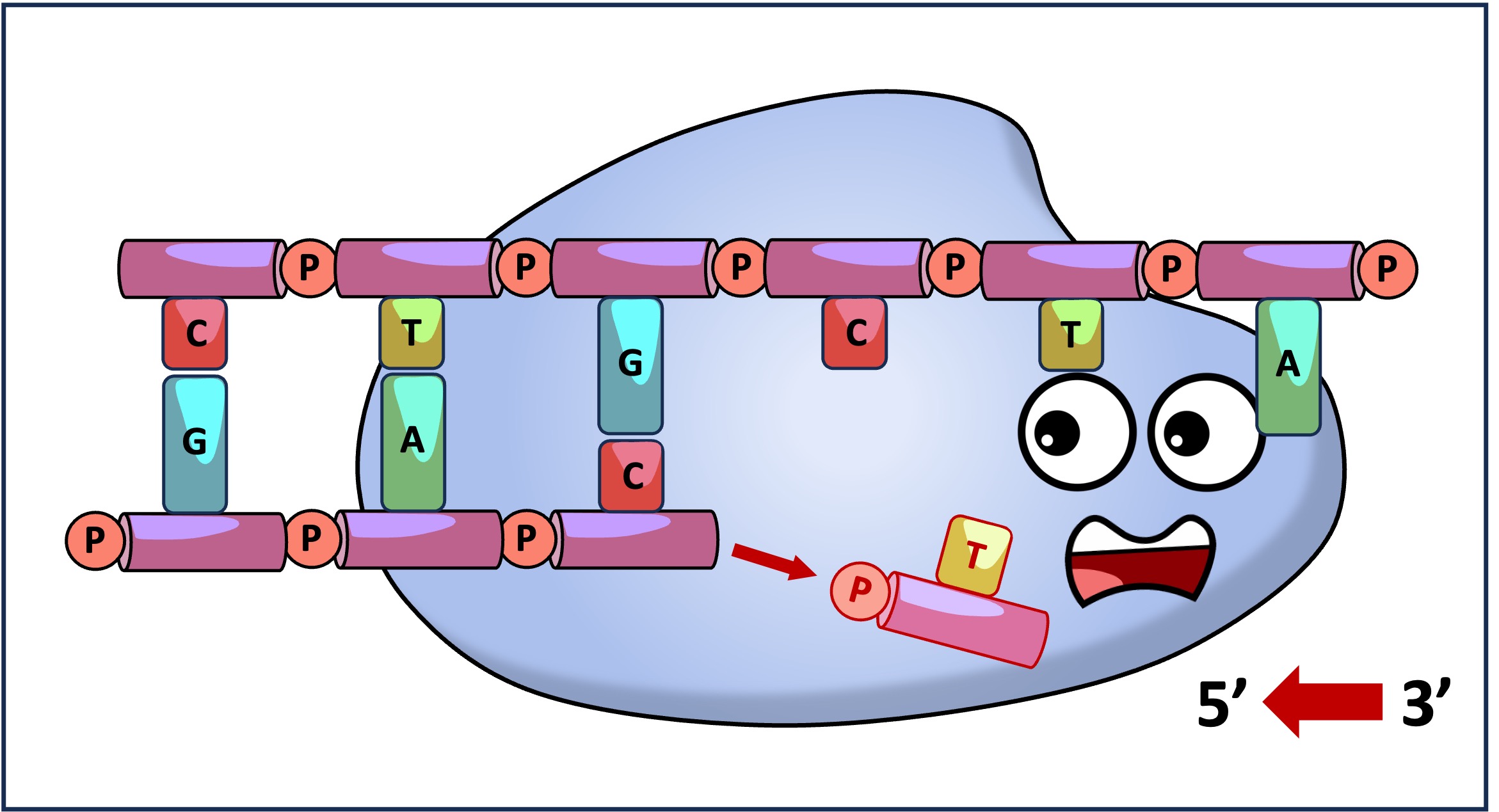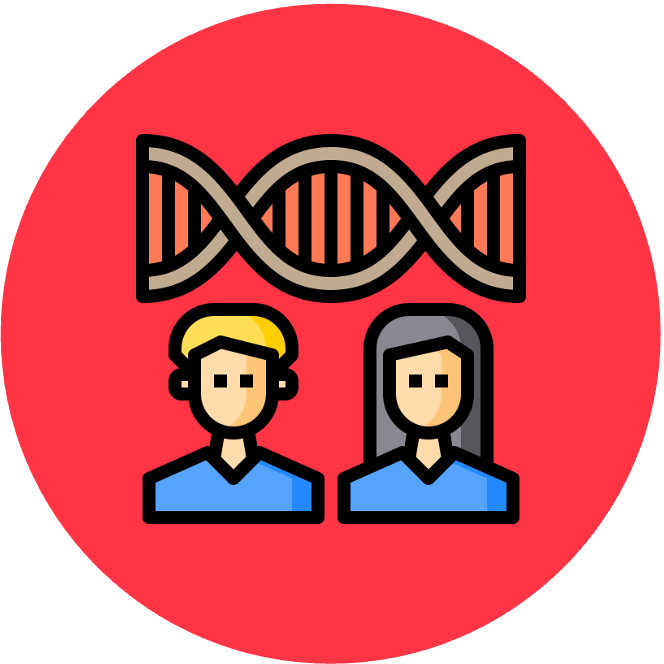

Proofreading
DNA replication is a reasonably accurate process, but occasionally errors can occur when copying the template strand
-
If these errors are not corrected, the new DNA sequence will be different to the original (resulting in mutation)
During replication, DNA polymerase III can proofread the base that has just been added to the 3’-terminal before adding the next nucleotide
-
If the wrong base has been added, DNA polymerase III will excise the nucleotide by breaking the phosphodiester bond holding it in place
-
In this respect, DNA polymerase III has 3’ → 5’ exonuclease activity (as it cleaves the bond at the 5’-end)
-
Once the incorrect base has been removed, the correct base can be incorporated before DNA polymerase III continues to synthesis DNA in a 5’ → 3’ direction
Sometimes the error will not be detected until after DNA replication has been completed
-
In these instances, exonucleases fully excise the sequence surrounding the base mismatch and then this excision is repaired by DNA polymerase III
DNA Pol III Activity

DNA Synthesis (5’ → 3')





